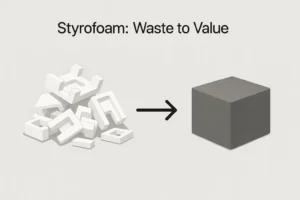The Professional’s Guide: How to Recycle Styrofoam Effectively
Commonly known as Styrofoam, Expanded Polystyrene (EPS) is 100% recyclable, but its low density makes it a logistical challenge. The key to efficient and profitable Styrofoam recycling lies in densification. This professional’s guide explores the process, the business case, and the essential technology—the EPS Foam Cold Press Machine—that transforms bulky foam waste into a valuable industrial commodity.

